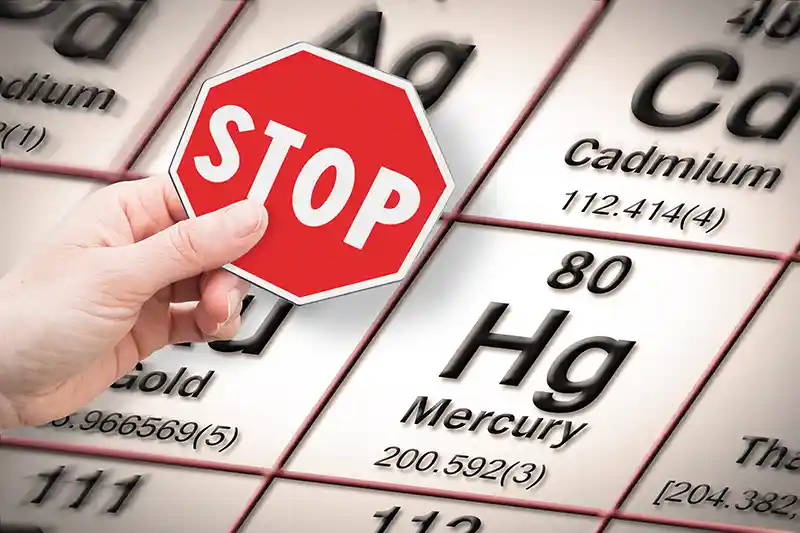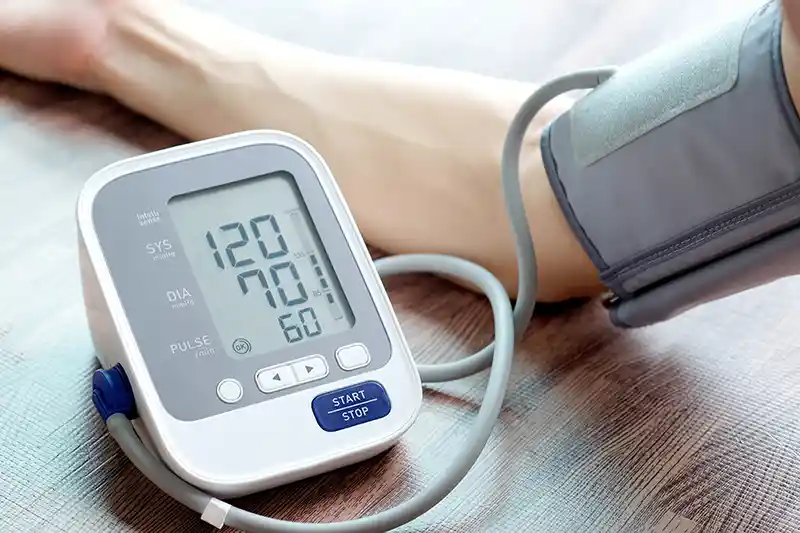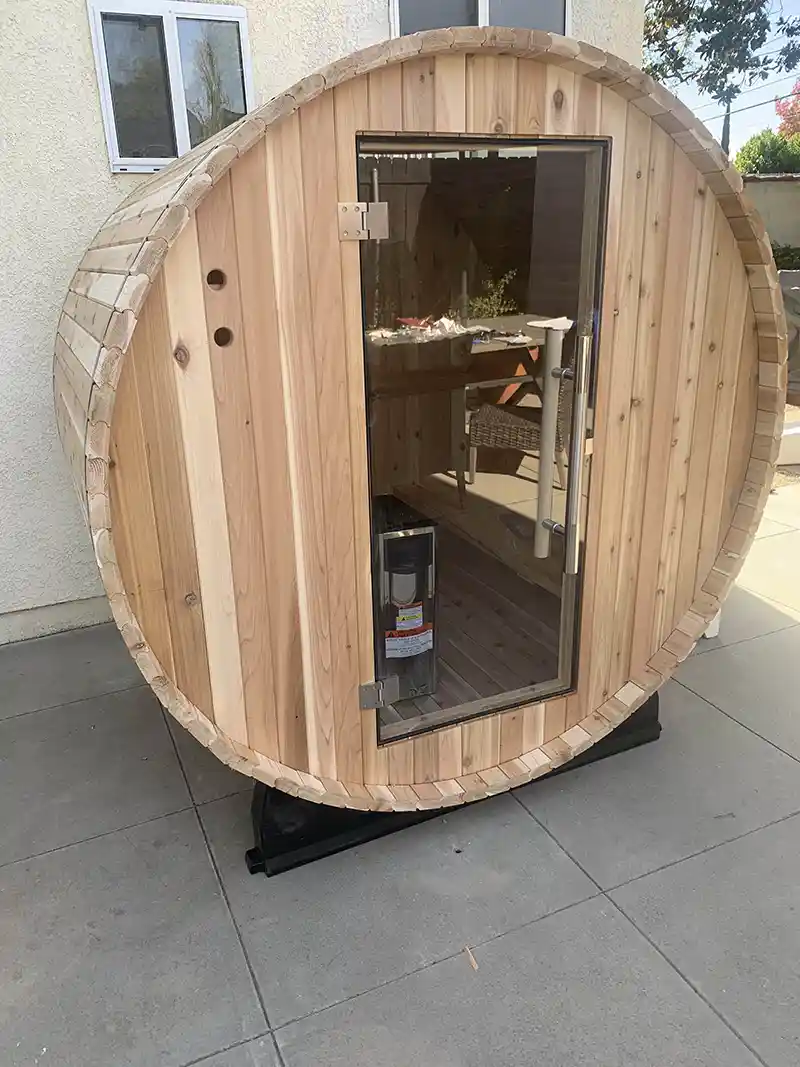
As research around sauna use continues to grow, I’m here to share the most current insights with you. The short and simple: Sauna’s health benefits are plentiful!
Have you ever wondered why someone would willingly endure elevated core body temperatures (hyperthermia) or why heat and cold therapies are trending on social media? Recent studies highlight the incredible advantages of sauna bathing. These include proven neurological, cardiovascular, and psychological benefits. And that’s just the beginning of all that saunas can offer!
In this article, you’ll learn more about the evidence supporting sauna bathing, my personal sauna story, and recommendations to help you incorporate this beneficial practice into your life.
Overview of Content
- What is Sauna Bathing?
- Are Saunas Good for You?
- Why I Use a Sauna as a Health Expert
- Overview of Sauna’s Health Benefits
- 1. Saunas Increase Heat Shock Proteins
- 2. Saunas Protect Your Brain and Your Mood
- 3. Sauna Bathing Expels Heavy Metals From Your Body
- 4. Saunas Help Lower Blood Pressure
- 5. Heart Disease Risk is Lowered by Sauna Bathing
- 6. There’s a Possible Lipid-Lowering Effect from Saunas
- 7. Saunas May Improve Arterial Stiffness
- 8. Sauna Bathing Before or After a Workout and for Recovery
- 9. Saunas Improve Back Pain
- 10. Saunas May Help with Respiratory Diseases and Asthma
- How Long Should You Stay in a Sauna?
- Is it Good to Sauna Every day?
- Why I Choose to Build a Barrel Sauna
- Share Your Sauna Experience!
What is Sauna Bathing?
In research, using a sauna is often referred to as “sauna bathing.” This practice involves short-term exposure to high heat in a log or wood-paneled room. However, the practice of short-term exposure to medium or high heat in a controlled environment is a cultural practice seen around the world, and each practice has its own specific methods involved. (1)
Finnish Sauna Bathing
Different cultures have their unique sauna traditions, but for simplicity, we’ll focus on the Finnish sauna, where temperatures range between 70-100°C (158-212°F) with humidity levels between 10-20%. These saunas are typically a wood-paneled room with an electric heater constructed of or filled with volcanic rocks. (2)
Are Saunas Good for You?
Absolutely, and here’s why! Sauna bathing (~20-30 min) can improve endothelial function through the release of nitric oxide, leading to better vascular relaxation (vasodilation). This enhances blood flow and oxygen delivery to your tissues. (3)
When counseling on nutrition and lifestyle changes, I often recommend saunas to clients with heart or neurological disease risks as both a preventive and therapeutic tool. Saunas are also great for chronic lower back pain and offer psychological benefits like relaxation and general well-being.
Why I Use a Sauna as a Health Expert
My clients often ask, “What is the main purpose of the sauna?” The answer depends on your health goals! The sauna’s health benefits are numerous. Personally, I got a sauna for various reasons, including:
- Managing my back pain. Years ago, I broke my back and experienced soft tissue damage. After a decade of weekly treatments, I decided to save time and money by investing in a sauna.
- My traditional Finnish sauna with volcanic rocks helps me relax, recover, and even strive to improve my VO2max.
- It’s also a fun way to connect with friends and family, sharing the health benefits I enjoy.
- Given my family history of Parkinson’s Disease, I use the sauna to help reduce heavy metal accumulation linked to neurological diseases.
Why I Chose a Finnish Sauna

Though infrared saunas are becoming popular, I chose a Finnish sauna because of the extensive research supporting its benefits at higher temperatures. Infrared saunas, heated to lower temperatures (45-60°C or 113-140°F), may offer similar benefits, but more research is needed. (1)
Overview of Sauna’s Health Benefits
Physical stress on the body isn’t always a bad thing! In fact, short-term stress typically has positive results because it enhances our cells’ antioxidant systems. (3) Think about the extra push during a spin class or an intense run—that’s the beneficial short-term stress I’m talking about.
Sauna bathing similarly applies short-term stress to the body, causing increased sweating, a higher heart rate, and more blood flow to the skin, just like exercise. (2) Additionally, core body temperature can rise to 39°C (102.2°F)! (4)
These short-term stress benefits help protect us from the harmful effects of long-term stress, which is often associated with cardiometabolic and neurological diseases. (3) So, how does raising your core body temperature and experiencing short-term stress benefit so many systems in your body? Let’s dive into 10 key benefits!
1. Saunas Increase Heat Shock Proteins
One of the key mechanisms offering neurological benefits involves heat shock proteins. When your body’s core temperature reaches around 39°C (102°F) in the sauna, it activates these proteins.
Every day our bodies use complex processes to maintain homeostasis and protect against things like reactive oxygen species, heavy metals, viruses, and other stressors. (5,6) Heat shock proteins are one part of a process that helps shield our cells from damage.
Heat shock proteins perform a few key functions:
- maintain cell integrity
- protect our cells from lethal assault
- protect our cells by refolding other misfolded proteins
- protect our cells by guiding damaged or misfolded proteins to the Lysosome to be destroyed if they are too damaged to save (7)
These are incredibly important functions for our health, as misfolded proteins are strongly implicated in neurodegenerative disease. (8)
2. Saunas Protect Your Brain and Your Mood
Saunas offer significant neurological benefits. For example, in a study on Finnish sauna practices, men who took 4-7 sauna baths per week at 80-100°C (176-212°F) and 10-20% humidity had a 66% reduced risk of developing dementia and a 65% reduced risk of developing Alzheimer’s compared to those who took one sauna bath per week. (9)
Heat shock proteins play a crucial role here, as they help protect against diseases of protein misfolding, such as neurodegenerative diseases. (7) Although there are certainly other factors at play, heat shock proteins are an important part of brain health.
Mental Health Benefits
Beyond physical health, sauna bathing also offers mental health benefits.
- One study found that a single session raising core body temperature to 38.5°C (101.3°F) in an infrared sauna-like environment acted like an antidepressant, significantly reducing depression ratings. (10)
- Another study discovered that sauna bathing 4-7 times per week significantly lowers the risk of developing psychosis or psychotic disorders. The rate of psychotic disorders per 1,000 person-years was 2.8 for those who took 4-7 sauna baths per week (median time was 15 minutes), compared to 8.1 for those who only took one sauna bath per week.
Although research in this area is still emerging, these findings are promising! (11)
3. Sauna Bathing Expels Heavy Metals From Your Body

Heavy metals like mercury, arsenic, and lead can accumulate in the body through everyday items and foods—think mercury in tuna, arsenic in rice or nonvinyl toys, or lead in old paint. These metals are neurotoxic, meaning they can harm the brain and behavior. People can be exposed to more or less of these toxins depending on where they live, what they eat, or what they do.
The good news? Sweating is a fantastic way to expel these heavy metals from your body, and research shows that sweat contains higher concentrations of heavy metals in comparison to urine! So, whether it’s through sauna bathing or exercise, making yourself sweat is a powerful detox method. (12)
My Personal Experience with Heavy Metal Expelling
This is one of the top 10 benefits of sauna bathing for me! The first three weeks of sauna bathing, my mouth tasted like metal after each session. I was clearly detoxing heavy metals.
What the Research Says about Excreting Heavy Metals
Research is unclear which is better—sauna bathing or exercise for excretion of these heavy metals, but the bottom line is both are good: making yourself sweat is a great way to purify yourself from heavy metals, and a sauna can be a valuable way to do it! (13,14)
Additionally, studies that examined the excretion of cadmium found that concentrations were often higher in sweat than in urine, especially in those with higher exposure. This is especially true when exposed to high temperatures and inducing hyperthermia.
- A study found that inducing hyperthermia through a sauna regimen of 5 repeated exposures lasting 10 minutes each at 100 degrees C (212°F) followed by a 5-minute ambient temperature cooldown increased the concentration of Cadmium excreted in the sweat and urine of participants. (15,16)
Incorporate regular sauna sessions or intense workouts into your routine to help detoxify your body from heavy metals. Aim for sessions that raise your core temperature and induce a good sweat!
4. Saunas Help Lower Blood Pressure
Let’s talk about heart health! Evidence shows that sauna bathing can be a powerful ally in preventing cardiovascular disease and managing some of its aspects.
- Short-Term Effects: In men and women with existing vascular disease, a 30-minute session in a traditional Finnish sauna (80-100°C, 10-20% humidity) led to an average reduction of 7 mm Hg in both systolic and diastolic blood pressure. For example, average systolic blood pressure dropped from 137 mm Hg to 130 mm Hg, and diastolic from 82 mm Hg to 75 mm Hg immediately after the session.
- Long-Term Benefits: Men who frequently enjoyed Finnish sauna baths (4-7 times per week) saw a remarkable 47% reduction in the risk of developing hypertension. (17)
My Recommendations for Blood Pressure Reduction
I recommend incorporating sauna sessions into your weekly routine to help lower blood pressure. Aim for 4-7 sessions per week at 80-100°C (176°F-212°F) (or up to your safe limit under medical advisement) with 10-20% humidity to help lower your blood pressure and reduce the risk of hypertension. I don’t go over 182 °F and always recommend checking with your primary care physician or cardiologist.
5. Heart Disease Risk is Lowered by Sauna Bathing
Your brain isn’t the only organ that benefits from sauna sessions—your heart will thank you too! Regular sauna use has been linked to a decreased risk of cardiac death.
For those with high-stress jobs, physiological and psychological stress can increase the risk of cardiometabolic diseases. Sauna bathing is a safe and effective way to reduce these risks, particularly if your busy schedule makes it tough to maintain other healthy habits. (3) If you can’t physically exercise, it’s also a great way to get your heart rate up!
- Reduced Risk of Fatal Coronary Heart Disease: Men who took 4-7 sauna baths per week in a traditional Finnish sauna (80-100°C, 10-20% humidity) had a 48% lower risk of fatal coronary heart disease compared to those who only took one sauna bath per week.
- Lower Risk of Sudden Cardiac Death: The same group of men had a 52% lower risk of sudden cardiac death when their traditional Finnish sauna sessions lasted 19 minutes or more. (5)
Aim for longer sessions of 19 minutes or more, 4-7 times a week, to significantly reduce your risk of heart disease and sudden cardiac death. Listen to some tunes or your favorite podcast while sauna bathing. Who knew preventing heart disease could be so relaxing?
6. There’s a Possible Lipid-Lowering Effect from Saunas
Ready to hear some exciting news about how sauna bathing might help manage your cholesterol levels? Let’s dive in! Research indicates that regular sauna sessions can have a positive impact on lipid profiles, including lowering total cholesterol and LDL cholesterol (the “bad” cholesterol), while potentially boosting HDL cholesterol (the “good” cholesterol).
Moreover, acute sauna bathing (~30 min) has been shown to improve endothelial function via nitric oxide release and a subsequent increase in vasodilation, detailed further below. (3)
To learn more about nitric oxide, read Best and Worst Foods for Erectile Dysfunction (ED).
Research about Reduced Cholesterol in Women and Men
- Study on Women: In a study involving nine healthy young women, participants took seven 30-minute sauna sessions at 91°C (196°F) and 15.6% humidity.
- Results showed slight reductions in total cholesterol and LDL cholesterol, along with slight improvements in HDL cholesterol. (18)
- Study on Men: Another study with 16 healthy young men had participants take ten Finnish sauna sessions, each consisting of three 15-minute segments at around 90°C (194°F) and 5-16% humidity, with 2-minute cooldowns in cold water.
- This study found that average total cholesterol dropped from 4.55 mmol/L to 4.18 mmol/L, and LDL cholesterol decreased from 2.71 mmol/L to 2.43 mmol/L 24 hours after the last session.
- Impressively, these effects lasted for some time, with cholesterol levels remaining lower even two weeks after the final session. (19)
Incorporate regular sauna sessions into your routine to potentially improve your cholesterol levels. Consider alternating with cold water cooldowns.
7. Saunas May Improve Arterial Stiffness

Let’s talk about how sauna bathing can help keep your arteries flexible and healthy. Studies have shown that sauna bathing can improve measures of arterial stiffness, which is crucial for cardiovascular health. Arterial stiffness is linked to an increased risk of cardiovascular events, so keeping your arteries flexible is essential.
- Brachial Artery Flow-Mediated Dilation (FMD): Sauna bathing has been shown to improve FMD, a measure of how well your arteries can dilate in response to increased blood flow.
- In one study, participants who took a sauna bath at approximately 82°C (179.6°F) and 23% humidity experienced improved FMD and reduced systolic blood pressure immediately after the session. (20)
- Pulse Wave Velocity (PWV): Another indicator of arterial stiffness, PWV, also improved directly after sauna bathing. This suggests that sauna sessions can make your arteries more flexible in the short term. (17)
- The data around the long-term effects of sauna bathing on arterial stiffness is still somewhat limited; however, the practice still appears to be relatively safe and well tolerated for patients with stable cardiovascular disease.
For better arterial flexibility and reducing blood pressure, include sauna sessions in your wellness routine.
8. Sauna Bathing Before or After a Workout and for Recovery
Thinking about incorporating sauna sessions into your workout routine? While it’s not ideal to use a sauna right before a workout due to the need for proper hydration and recovery, there are other optimal times to reap the benefits. I like a good sauna session after a workout to extend cardio benefits and relax.
Post-Exercise Recovery with Sauna
Sauna bathing doesn’t just boost exercise performance; it also aids recovery. Studies suggest that sauna bathing post-exercise can have favorable effects on your body.
For instance, one study involving active young men showed that a 30-minute recovery in a far infrared sauna (at 35-50°C, 95°F-122°F, and 25-35% humidity) increased serum growth hormone levels and decreased serum cortisol levels—two factors crucial for better recovery. (21)
Tip: Try a 30-minute session in a far infrared sauna after your workout to help boost recovery by increasing growth hormone and reducing cortisol.
Improving VO2 Max with Sauna
Struggling to improve your VO2 Max? Sauna bathing might be your secret weapon! VO2 Max is a key measure of your cardiorespiratory fitness, indicating the maximum amount of oxygen your body can consume during exercise.
The Study: Athletes who incorporated sauna sessions (26-30 minutes, 2-4 times per week at 101-108°C, (214°F-226%) and 5-10% humidity) over a three-week period saw significant improvements in their VO2 Max. (22)
Tip: Incorporate 2-4 sauna sessions per week, lasting 26-30 minutes each, to help enhance your VO2 Max and overall fitness.
9. Saunas Improve Back Pain
Feeling some discomfort in the sauna? That’s because the high heat triggers the release of dynorphins, which are opioids produced by the brain. (1) Dynorphins can make you feel pain, unease, discomfort, often referred to as dysphoria.
But here’s the interesting part: the release of dynorphins also kickstarts cellular processes that make us more sensitive to the positive effects of endorphins.
Endorphins are those wonderful chemicals that make us feel good, and they’re also released during sauna sessions. (1) So, while you might feel uncomfortable in the sauna, dynorphins are actually setting you up to feel fantastic once you’re out! (5)
Embrace the temporary discomfort in the sauna—it’s paving the way for a boost in your endorphin levels, helping you feel better afterward.
10. Saunas May Help with Respiratory Diseases and Asthma
Do you have asthma or other respiratory issues? Saunas might offer some relief. Studies show that regular sauna use can significantly reduce the risk of acute and chronic respiratory diseases.
- For instance, Finnish men who used a traditional sauna for an average of 14 minutes per session at 79°C (174°F) more than four times per week were 47% less likely to experience respiratory diseases like COPD, asthma, and pneumonia compared to those who used the sauna less frequently. (23)
- In another study, Finnish men who used a sauna four or more times per week were 19% less likely to develop pneumonia in the future. (24)
Regular sauna sessions (around four times per week) at about 79°C can help reduce the risk of respiratory diseases, including asthma and pneumonia.
How Long Should You Stay in a Sauna?
Getting your body heat-adjusted takes some time. The first time I used a sauna, I was ready to get out after just twelve minutes! It’s essential to listen to your body.
- Many experts recommend staying in the sauna for 15-20 minutes. Most Finnish research suggests 20-30 minutes, with a minimum recommendation of 19 minutes.
- Personally, I aim for 20-25 minutes—I want to feel energized, not wiped out.
If you feel tired, it could be due to various reasons, such as clearing out toxins, being underhydrated, heat sensitivity, or even getting your heart rate up like during a hard exercise session. There could also be medical reasons, so always pay attention to your body’s signals.
Start your sauna sessions with shorter sessions and gradually increase your time as your body adjusts to the heat. For optimal benefits, aim for 20-22 minutes in the sauna.
Is it Good to Sauna Every day?
Listening to your body is crucial, and if you have any concerns, consult your doctor when starting a new health regimen. While I’d love to use the sauna daily, it’s not always possible with work and life duties. I’m often asked, is it good to go into the sauna every day?
It may be good, but it is not practical. I aim for every day but use it 4-6 days a week. Regular sauna use can provide numerous health benefits, so fit it into your schedule as best you can.
Incorporate sauna sessions into your weekly routine, aiming for 4-5 times per week. Adjust based on how your body feels and your daily commitments.
Why I Choose to Build a Barrel Sauna
I built a barrel sauna with a team of two in about 10 hours over two days from almostheaven.com. We followed a specific YouTube video for our sauna model, and it was easy and fun to build! The last few pieces of wood were challenging to place at the top of the barrel. These filler pieces look different from the regular planks, and initially, we couldn’t figure out how they fit. We eventually realized they go between additional filler planks that are slightly narrower than the regular ones.
Mounting the heater presented some challenges, but you can find helpful videos. Ensure you budget for an electrician to check the amperage and install the heater correctly.
Share Your Sauna Experience!
I’d love to know how your sauna experience goes and how it benefits your health. If you want to make some lifestyle changes to live your best health potential, contact me for an appointment. Share your sauna stories with me on Instagram at @MelissasHealthyLiving.
By following these tips and making sauna bathing a part of your wellness routine, you can enjoy numerous health benefits.
References:
- Hussain, Joy, and Marc Cohen. “Clinical Effects of Regular Dry Sauna Bathing: A Systematic Review.” Evidence-Based Complementary and Alternative Medicine : ECAM, vol. 2018, Apr. 2018, p. 1857413, https://doi.org/10.1155/2018/1857413.
- Kukkonen-Harjula, K., & Kauppinen, K. (2006). Health effects and risks of sauna bathing. International Journal of Circumpolar Health, 65(3), 195–205. https://doi.org/10.3402/ijch.v65i3.18102
- Henderson, Kaemmer N., et al. “The Cardiometabolic Health Benefits of Sauna Exposure in Individuals with High-Stress Occupations. A Mechanistic Review.” International Journal of Environmental Research and Public Health, vol. 18, no. 3, Feb. 2021, p. 1105, https://doi.org/10.3390/ijerph18031105.
- Sauna-Induced Body Mass Loss in Young Sedentary Women and Men. https://www.hindawi.com/journals/tswj/2014/307421/. Accessed 8 Jan. 2024.
- Patrick, Rhonda P., and Teresa L. Johnson. “Sauna Use as a Lifestyle Practice to Extend Healthspan.” Experimental Gerontology, vol. 154, Oct. 2021, p. 111509, https://doi.org/10.1016/j.exger.2021.111509.
- Squier, Thomas C. “Oxidative Stress and Protein Aggregation during Biological Aging.” Experimental Gerontology, vol. 36, no. 9, Sept. 2001, pp. 1539–50, https://doi.org/10.1016/S0531-5565(01)00139-5.
- Leak, Rehana K. “Heat Shock Proteins in Neurodegenerative Disorders and Aging.” Journal of Cell Communication and Signaling, vol. 8, no. 4, Dec. 2014, pp. 293–310, https://doi.org/10.1007/s12079-014-0243-9.
- Soto, Claudio, and Lisbell D. Estrada. “Protein Misfolding and Neurodegeneration.” Archives of Neurology, vol. 65, no. 2, Feb. 2008, pp. 184–89, https://doi.org/10.1001/archneurol.2007.56.
- Laukkanen, Tanjaniina, et al. “Sauna Bathing Is Inversely Associated with Dementia and Alzheimer’s Disease in Middle-Aged Finnish Men.” Age and Ageing, vol. 46, no. 2, Mar. 2017, pp. 245–49, https://doi.org/10.1093/ageing/afw212.
- Janssen, Clemens W., et al. “Whole-Body Hyperthermia for the Treatment of Major Depressive Disorder: A Randomized Clinical Trial.” JAMA Psychiatry, vol. 73, no. 8, Aug. 2016, pp. 789–95, https://doi.org/10.1001/jamapsychiatry.2016.1031.
- Laukkanen, Tanjaniina, et al. “Sauna Bathing and Risk of Psychotic Disorders: A Prospective Cohort Study.” Medical Principles and Practice, vol. 27, no. 6, Sept. 2018, pp. 562–69, https://doi.org/10.1159/000493392.
- Genuis, Stephen J., et al. “Blood, Urine, and Sweat (BUS) Study: Monitoring and Elimination of Bioaccumulated Toxic Elements.” Archives of Environmental Contamination and Toxicology, vol. 61, no. 2, Aug. 2011, pp. 344–57, https://doi.org/10.1007/s00244-010-9611-5.
- Cho, Kang-Hee, et al. “Effect of Water Filtration Infrared-A (WIRA) Sauna on Inorganic Ions Excreted through Sweat from the Human Body.” Environmental Science and Pollution Research International, vol. 30, no. 7, Feb. 2023, pp. 18260–67, https://doi.org/10.1007/s11356-022-23437-3.
- Kuan, Wen-Hui, et al. “Excretion of Ni, Pb, Cu, As, and Hg in Sweat under Two Sweating Conditions.” International Journal of Environmental Research and Public Health, vol. 19, no. 7, Apr. 2022, p. 4323, https://doi.org/10.3390/ijerph19074323.
- Sears, Margaret E., et al. “Arsenic, Cadmium, Lead, and Mercury in Sweat: A Systematic Review.” Journal of Environmental and Public Health, vol. 2012, Feb. 2012, p. e184745, https://doi.org/10.1155/2012/184745.
- Siquier-Coll, J., et al. “Effect of Exposure to High Temperatures in the Excretion of Cadmium and Lead.” Journal of Thermal Biology, vol. 89, Apr. 2020, p. 102545, https://doi.org/10.1016/j.jtherbio.2020.102545.
- Cardiovascular and Other Health Benefits of Sauna Bathing: A Review of the Evidence – Mayo Clinic Proceedings. https://www.mayoclinicproceedings.org/article/S0025-6196(18)30275-1/fulltext. Accessed 5 Jan. 2024.
- Pilch, Wanda, et al. “EFFECT OF 30-MINUTE SAUNA SESSIONS ON LIPID PROFILE IN YOUNG WOMEN.” Medicina Sportiva, vol. 18, Oct. 2014, pp. 165–71, https://doi.org/10.5604/17342260.1133107.
- Gryka, Dorota, et al. “The Effect of Sauna Bathing on Lipid Profile in Young, Physically Active, Male Subjects.” International Journal of Occupational Medicine and Environmental Health, vol. 27, no. 4, Aug. 2014, pp. 608–18, https://doi.org/10.2478/s13382-014-0281-9.
- Gravel, Hugo, et al. “Acute Vascular Benefits of Finnish Sauna Bathing in Patients With Stable Coronary Artery Disease.” The Canadian Journal of Cardiology, vol. 37, no. 3, Mar. 2021, pp. 493–99, https://doi.org/10.1016/j.cjca.2020.06.017.
- Mero, Antti, et al. “Effects of Far-Infrared Sauna Bathing on Recovery from Strength and Endurance Training Sessions in Men.” SpringerPlus, vol. 4, July 2015, p. 321, https://doi.org/10.1186/s40064-015-1093-5.
- Kirby, Nathalie V., et al. “Intermittent Post-Exercise Sauna Bathing Improves Markers of Exercise Capacity in Hot and Temperate Conditions in Trained Middle-Distance Runners.” European Journal of Applied Physiology, vol. 121, no. 2, 2021, pp. 621–35, https://doi.org/10.1007/s00421-020-04541-z.
- Kunutsor, S.K., Laukkanen, T. & Laukkanen, J.A. Sauna bathing reduces the risk of respiratory diseases: a long-term prospective cohort study. Eur J Epidemiol 32, 1107–1111 (2017). https://doi.org/10.1007/s10654-017-0311-6
- Kunutsor, Setor K, and Jari A Laukkanen. “High fitness levels, frequent sauna bathing and risk of pneumonia in a cohort study: Are there potential implications for COVID-19?.” European journal of clinical investigation vol. 51,3 (2021): e13490. doi:10.1111/eci.13490






